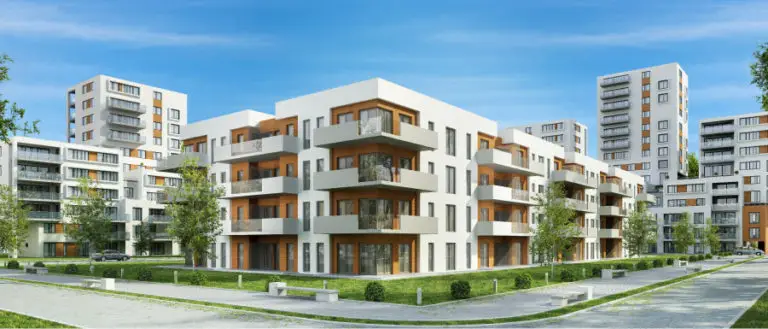Is Architecture School Hard? Here’s the Truth
Architecture school is often considered one of the most challenging courses in a university. The time and output demand students to make architecture their life. Many of those aspiring to enroll in architecture school will find themselves dropping out if they do not have the proper motivation for wanting to study architecture in the first place.
So is architecture school hard? Architecture school is hard regardless of talent, skill, or motivation. Architecture is a demanding course that requires a lot of time, effort, and a broad skill set. With all this said, anyone can get through architecture school as long as they have the willingness to learn and improve.
In this article, we’ll be going into the objective of architecture school and pretty much everything that a student has to master before he/she can graduate and become a licensed architect. So buckle up and let’s get started.
The objective of architecture school
In the simplest of terms, architecture school requires students to master two main things:
- Making creative solutions/decisions for problems.
- To know everything there is to know about a building.
Each project comes with its own unique challenges and problems. The job of the architect is to be able to see the opportunities that are present and come up with an ingenious solution based on the situation.
The architect will be communicating with everyone involved in a project, from the various engineers, the clients, the contractors, the foremen, the local government, the landscape architect, the interior designer, etc.
Since the architect has to talk to each and every professional, he/she has to know enough, not only about architecture but also each respective aspect involved in the entire process, to be able to communicate ideas and instructions properly.
The pacing of architecture school
Architecture school is all about foundations, no pun intended. The curriculum is designed to give students the fundamentals and build upon there. The course of architecture is so interlinked that to miss one subject would make you have to wait a whole semester or even an entire year just to catch up.
Each subject is based on prerequisites, for example, a certain design class will require to pass a class about structurals and utilities, and those classes will require you to pass a few physics classes as well. It’s a very intricate system designed to constantly reinforce the teaching of previous classes into the next.
There are 9 main categories in architecture school, each category also has its own field in the real world. The table below contains the classes and a very brief description of what they teach.
| CATEGORY | BRIEF DESCRIPTION |
| Design | A compilation of all 8 other categories, design involves not only the aesthetic aspect of the building but everything else applied to one project. |
| Structurals | To learn about how buildings stay up and the forces that affect a building. |
| Laws | To comply with local laws and building regulations. |
| Output and Presentation | To learn how to create drawings, models, diagrams, and how to give project presentations. |
| Utilities | To learn how the utilities (Mechanical, Electrical, Plumbing and etc.) work and how they’re planned. |
| Planning | To learn how to plan the building in accordance with its context. |
| Construction | To learn how a building is constructed. |
| Research | To learn how to do research relevant to a building. |
| History | To learn about aesthetics, past movements, the history of buildings, etc. |
Learning about architectural design
Design classes are meant to incorporate each category into building design. Design isn’t just making a building look pretty, contrary to popular belief. Instead, it’s supposed to be a compilation of different creative solutions.
Each category of architecture comes with its own problems that need to be solved, oftentimes conflicting, and almost always at the costs of each other. Architecture students have to come up with a way that would make everything work together.
In terms of aesthetics, the architect must become their own greatest critique. Every line, space, finish, color, and opening contributes to the overall look and feel of the building.
Design always starts with a concept, the north star that the architecture student refers to when making decisions in order to arrive at the final design. A consistent mindset and theme are vital to ensure that the structure turns out as a cohesive unit in all aspects.
Learning about architectrual structurals
All structures must be able to handle all the forces that may apply to it. There are 3 main forces that affect a building, namely:
- Forces of the building itself and the objects inside.
The forces in this category include the weight of the building and all the fixtures, furniture, etc.
- Forces from human activity.
Human activity is also factored in when computing for the structurals. This is especially important for buildings that will have a lot of people in them. Some of these may be active like for a train station, while others may be passive like in an office. Either way, the civil engineer ensures that the building can always handle the intended load.
- Forces from nature.
Earthquakes, rain, and wind are forces that can affect a building. Wind and rain may not seem like a particularly strong force but remember that hurricanes and tornadoes can occur in urban areas. Strong winds will cause a considerable amount of load on the building, depending on the direction of the wind and its speed.
Structural systems are vital when preparing for earthquakes. A good structural system will not collapse immediately when hit by an earthquake; instead, it is designed to fail slowly over the course of hours in order to ensure that people can get out safely.

Learning about building laws
Laws and regulations are important to ensure that buildings are safe, secure, standardized, and stays within the context of its immediate surroundings.
Laws serve as hard limitations for architects, which is a good thing to ensure that everyone in the area can co-exist peacefully. This is one of the primary reasons behind all laws, aside from safety of course.
An example of important building laws includes setbacks, road right of way, zoning laws, minimum dimensions of spaces, and fire escape systems, just to name a few.
Building laws serve as guidelines for architects and ensure that all buildings built are safe, liveable, and are conducive to a better urban environment for all.
Laws don’t only regulate how a building must be built but also how a building should be used. Buildings actually have a maximum capacity that must always be followed, and their laws also limit what owners can and can’t do with their land.
Architecture school – Output and Presentation (Communication)
In order to sell the idea to the client, as well as to communicate with other professionals working on the building project, the architect must master the means of translating their design and thought process into different mediums.
Output involves creating all the necessary drawings, models, and graphics to communicate everything related to a building to a client or panel.
The following are the main outputs that are required in architecture school:
- Drawings
- Models (in software)
- Physical models
- Boards
Learning about utilities
If the design is the face and the structurals are the bones, then think of the utilities as the different “organs” of a building.
Utilities can be divided into three categories:
- Plumbing
The plumbing provides utility by distributing water throughout the building and taking used water and wastewater outside of the building.
- Electrical
In our day and age, it’s almost impossible to live without electricity. The utility that electrical provides is ensuring that sufficient power is given to each room.
- Mechanical
Mechanical utility involves systems that may be required throughout the building. These involve ventilation, heating, fire alarms, elevators, and many more. Mechanical utilities provide and make designs possible as well as providing other things that are vital to the safety and functionality of a building.
The utilities serve as the means of making a building capable of supporting humans, especially with the grand scale of designs in the modern era. Architecture students must master the utilities in terms of how they should be planned, the factors that come into play, and how it relates to human activity.
Learning about architectural planning
Planning might sound weird as its own category; however, everything in architecture requires planning. The whole profession is fundamentally based on creating a plan for a building. And to make a good plan, you have to know what the context of a building is really in.
Planning involves learning about topography, precipitation, environmental factors, urban factors, and the like. To plan a building properly, architects always start outside going in, meaning that before a design for the building is made, architects have to plan out based on the nearby environment.
Learning about construction
The construction process in house-building is the lengthiest, most expensive, and hardest part of the project to execute properly. There’s often a running joke that no building is ever built perfectly to the plans, which is inevitable due to the endless factors that come up throughout months of construction.
The construction category involves mastering these 3 things:
- Construction of the building
Foundations, walls, slabs, columns, etc. are the elements that keep a building up. The architect must know how a building is built in order to plan accordingly and to communicate with the contractor properly.
- Materials as building materials.
The architect must be knowledgable in materials and everything that comes with them. They must know the properties of all the materials used and what it entails.
- Finishes and what they do.
The architect must know how the desired results are often reached or, in simpler terms, how the final product is made. Finishes are what makes buildings beautiful and inhabitable. Every part of a house, from the window frame to the roof shingles, has been thought of and planned by the architect.
With this much information involved, the architect communicates to the contractor by creating a compilation of specifications. Specifications include literally everything that will go into the building, from the mixture of the concrete to the capacity of the airconditioning.
This document is what will be the basis for a construction project and is the reason why architecture students really need to master nearly everything related to the construction process.

Learning about architectural research
Most decisions are usually made based on a certain standard in architecture, meaning that there is already an established industry standard on what needs to be done. The important decisions, however, need to be well backed up by research. Just like how a doctor does their research before diagnosing a client, the architect must do research before arriving at a sound decision.
Research, in the context of architecture, involves studying three main things:
- The structure and its relationship with nature.
- The people and how they interact with the built environment.
- Hard data.
Research is what drives innovations. In architecture, innovations are often unnoticed, and in fact, that means it’s doing its job well. Learning about how people interact with architecture helps architects design their buildings to be better. Some of it may seem like common sense, while others are small minute changes that leave a significant impact.
An example would be the “death ray” hotel’s design that amplified the reflection of the sun causing a magnifying glass effect on the nearby hotel guests, to the point that they were getting sunburnt.
How architecture students use research is by testing their ideas. If they make a decision for their project, they can refer to previous studies and see how that decision will actually affect people and the building.
Learning about architectural history
Learning from history will always lead to new innovations.
Architecture students need to learn about how architecture has evolved in both their country and in the world, the styles that have arisen throughout the centuries, and how designers thought about architecture back then.
History is essential to learn about the meanings behind architecture, the historical contexts of the building as well as its relation to the current contexts of the time should be taken as inspiration from an architecture student as to design new buildings that are well adjusted to the needs of the modern person and by experimenting based on the past solutions, it is through this that architects arrive at new innovations.
Is Architecture school harder than Engineering?
The difficulty of a course depends from person to person. However, in terms of objective data such as hours worked, output needed, etc. Architecture is harder than engineering. Engineering is often divided into different sub courses, specializations that a person can choose from.
Any program under engineering has much more in-depth and complex subjects and topics than the subjects taken in architecture school. However, architecture school requires a good understanding of all types of engineering related to buildings.
Electrical, Mechanical, and Civil engineering concepts must be understood and applied by an architecture student and must be actively used, especially for their thesis.
If you prefer to specialize and master one aspect of a building and also apply your expertise to other fields, then engineering is more for you. If you want to learn everything about a building and apply it through designs that provide creative opportunities, then architecture is more for you.
Conclusion
There are many topics and courses that architecture students must master and put together into practice before they can graduate from architecture school. The entire point of architecture school is to ensure that once you graduate, you are fully capable of handling the strenuous workload that the profession will require of you.
It’s been often said that the difference between the lifestyle of an architecture student and an architect is that an architect gets paid. At the end of the day, if you have the proper motivations and if you know what you really want, then architecture school and the architect lifestyle will be manageable for you.







